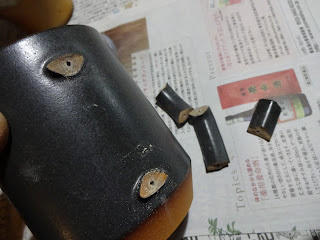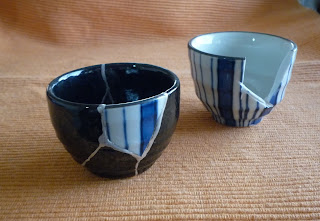My daughter and her boy friend have been to Portland in USA
to spend holidays this year.
There she bought a mug made by a local potter. But when she came back to Tokyo,
she soon broke its handle inattentively.
She asked me to fix it because it recalls her happy holidays in Portland.
As it was a very heavy mug , I decided to fix it by putting inner wire.
I drilled holes at both sides of all broken parts and put a wire into each hole,
and assembled with lacquer.
I finished it with powder of silver.















































